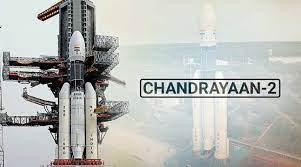India's Lunar Mission: Chandrayaan-2 and Its Discoveries.
India’s lunar mission, Chandrayaan-2, was launched on July 22, 2019, from the Satish Dhawan Space Centre in Sriharikota. The mission was a significant milestone for the Indian Space Research Organisation (ISRO), as it was the second lunar exploration mission after the successful Chandrayaan-1 mission in 2008.
The Chandrayaan-2 mission comprised three components – the Orbiter, the Lander, and the Rover. The Orbiter carried eight scientific instruments, while the Lander, Vikram, carried three instruments, and the Rover, Pragyan, carried two instruments. The mission's primary objective was to study the lunar terrain and map the distribution of elements and minerals on the moon's surface.
Unfortunately, the Lander, Vikram, crashed during the landing attempt, resulting in the mission's partial success. However, the Orbiter continued to orbit the moon and gather crucial data about the lunar environment, which led to some significant discoveries.
One of the most significant discoveries made by the Chandrayaan-2 mission was the detection of water molecules on the moon's surface. The discovery was made by the Orbiter's imaging infrared spectrometer (IIRS) instrument, which detected water molecules in the polar regions of the moon. This finding was significant as it challenged the long-held belief that the moon was a dry, desolate place. The discovery of water on the moon opens up the possibility of using it as a resource for future human exploration and settlements.
Another discovery made by the Chandrayaan-2 mission was the detection of minerals such as magnesium, aluminum, and silicon on the moon's surface. These minerals are essential components of rocks and soil, and their discovery provides valuable information about the moon's geology and formation.
The Orbiter also provided high-resolution images of the moon's surface, allowing scientists to study the moon's topography and geological features. The images revealed the presence of several craters, boulders, and other geological features, which will help scientists better understand the moon's formation and evolution.
The mission also provided valuable data on the moon's ionosphere and the interaction between the moon and the solar wind. The data will help scientists study the moon's atmosphere and magnetic field, which will be crucial for future lunar missions.
In conclusion, despite the partial success of the mission, the Chandrayaan-2 mission was a significant achievement for the Indian Space Research Organisation. The discoveries made by the mission have provided valuable insights into the moon's geology, mineralogy, and environment, and will be crucial for future lunar exploration and settlement. The mission has also helped establish India as a significant player in the global space race and a leader in space technology.





0 Comments:
Post a Comment
Subscribe to Post Comments [Atom]
<< Home